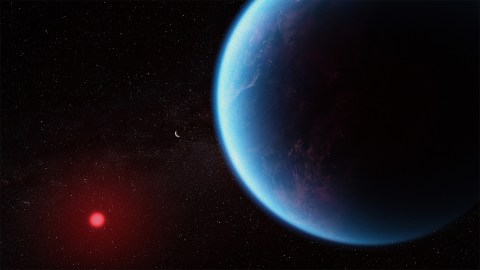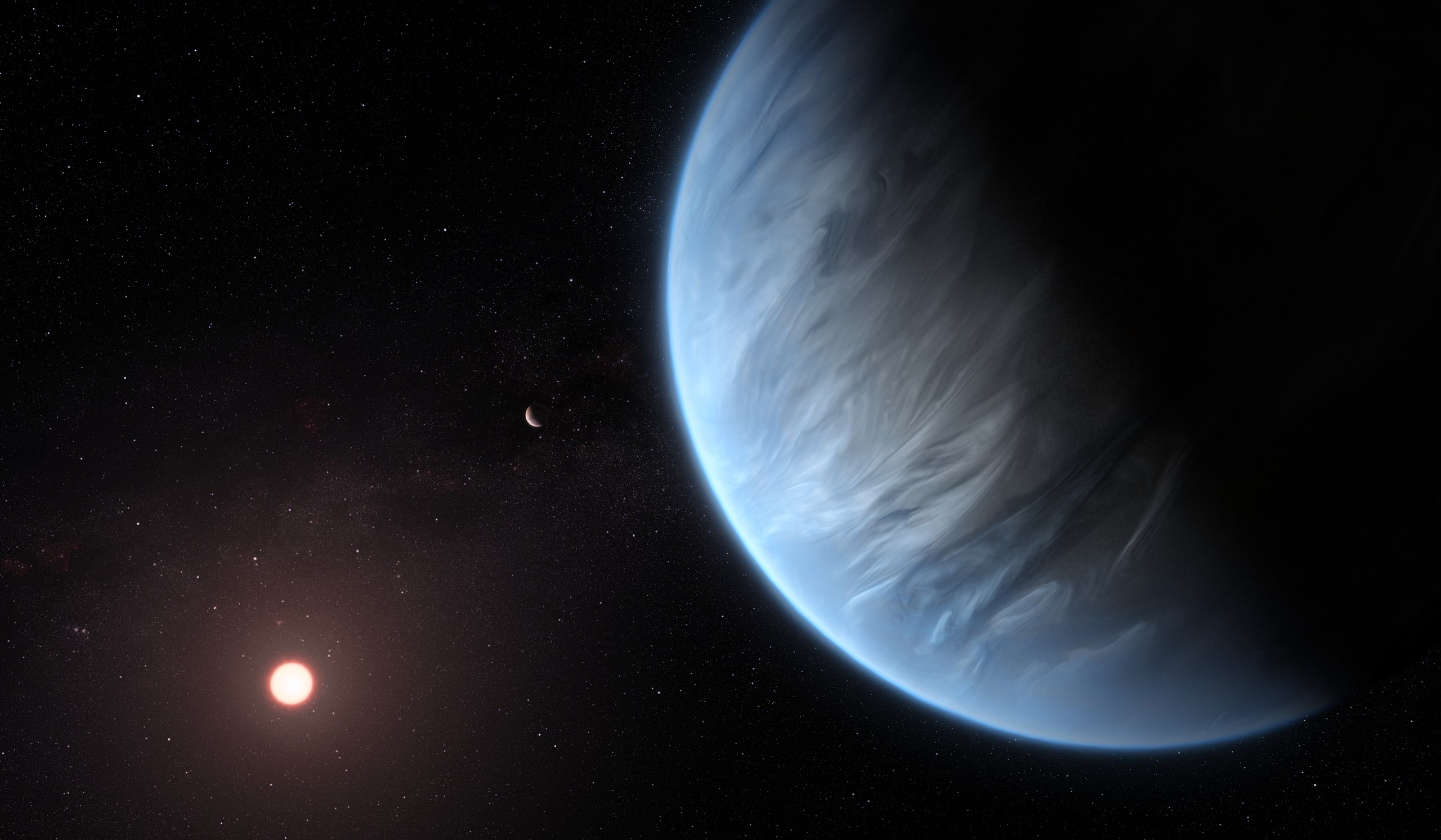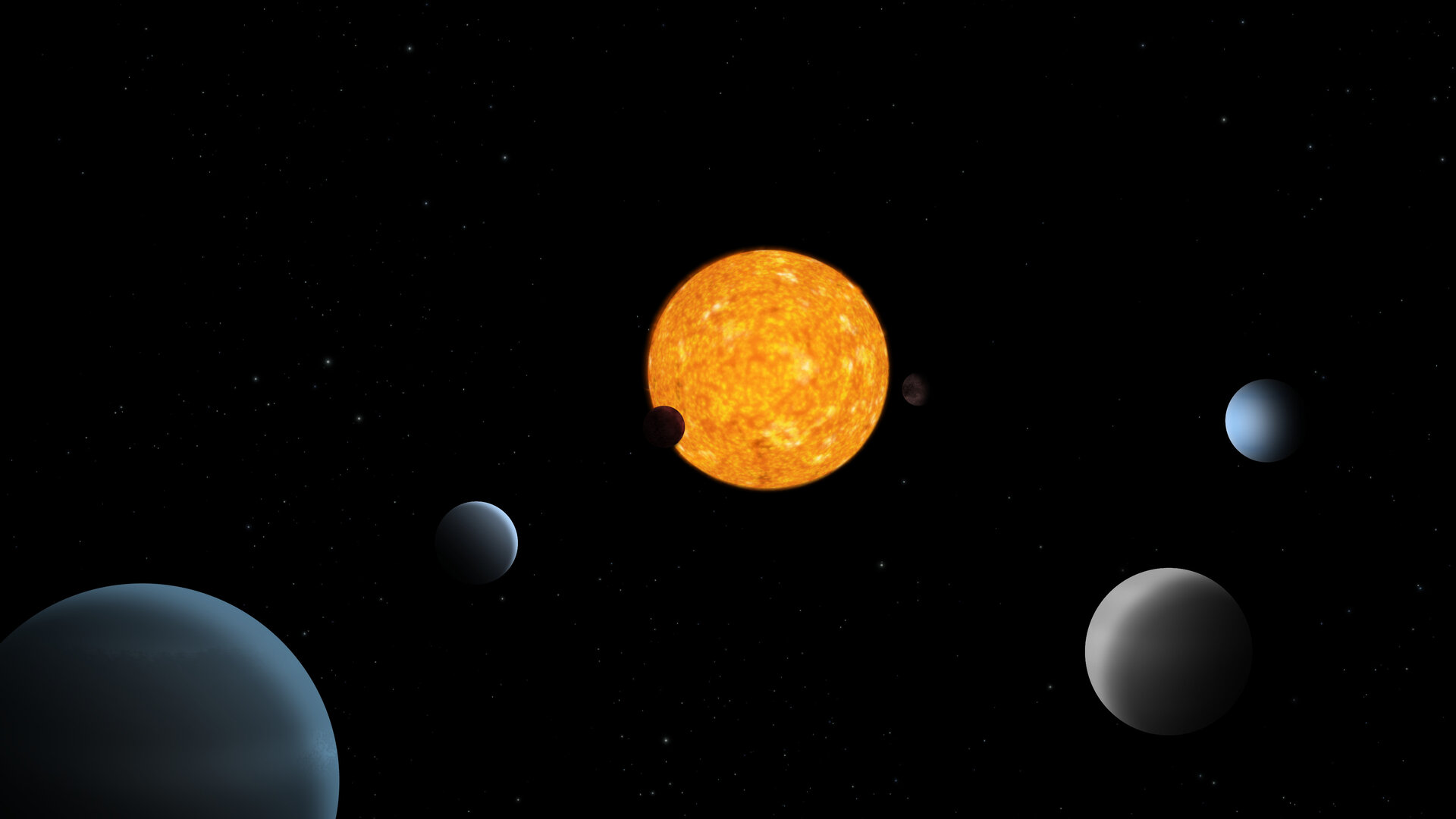New JWST results show we’re on a path to finding alien life

- Scientists determined that the atmosphere of sub-Neptune planet K2-18b contains methane and carbon dioxide.
- This suggests that it might be a Hycean world — a potentially new type of habitable planet with a thick hydrogen atmosphere covering a liquid water ocean.
- Scientists also detected dimethyl sulfide, a compound associated with life on Earth. Though the signal was weak, it showcased what finding a biosignature in the future could look like.
We are living on the cusp. Within the next few decades, we may well have hard evidence for the existence of alien life on worlds light-years distant from Earth. That was my takeaway from new results that the James Webb Space Telescope released a couple of weeks ago. While there was some controversy that swirled around the announcement, it really had nothing to do with the science itself, which was (to my mind) quite beautiful. So, let’s dig in to see how JWST is revealing the path humanity will take to resolving the age-old question: Are we alone?
Atmospheric characterization
The JWST press release came following a new paper by Nikku Madusudhan of the University of Cambridge and his collaborators titled “Carbon-bearing Molecules in a Possible Hycean Atmosphere.” The basis of their science was the revolutionary technique called “atmospheric characterization.”
When a distant exoplanet passes between us and the star it orbits, some of the starlight passes through the planet’s atmosphere. Interaction with chemicals in the atmosphere leave a kind of spectral fingerprint in the starlight that allows astronomers to detect what is in that alien planet’s air. (It is a method that I unpack in more detail in The Little Book of Aliens, my new tour of all-things ET coming out next month. In the book I couldn’t help gushing about how stunning it is that human beings can now sniff out the atmospheric constitution of alien worlds.)
So, what did Madusudhan and his colleagues discover? Two molecules in particular were detected with high degrees of confidence: methane (CH4) and carbon dioxide (CO2). As you can see from the chemical formulas (and the paper’s title), these are molecules with the element carbon in them. Why was that important? To answer that question, we need to look at the planet the astronomers were focusing on.
Hycean worlds
K2-18b is what’s called a “sub-Neptune” with a mass about 8.6 times that of Earth. We do not have sub-Neptunes in our Solar System. There are no planets orbiting the Sun with masses between 1 Earth mass (that is, Earth) and about 14 Earth masses (Uranus). That means we don’t know much about what these planets really look like. What kinds of worlds are they?
In earlier papers, Madusudhan suggested that K2-18b might be a Hycean world, a planet with a thick atmosphere made of hydrogen covering a liquid water ocean. That is a pretty radical idea. Most of us in astrobiology believe that liquid water is the key to life. That is why we focus so much on Earth-like planets in the so-called “Habitable Zone” — the band of orbits not too far or too close to the home star where liquid water exists on the planet’s surface.
If Hycean worlds exist, however, then they might represent an entirely new kind of habitable world. They would not be Earth-like at all, but still warm and very wet. And that brings us back to the methane and carbon dioxide. These chemicals, and their abundances implied by the JWST data, support the conclusion that K2-18b is a Hycean world — a whole new kind of planet where life might form. That’s very exciting.
The game is afoot
Now for the controversy. In the paper, the authors noted that they found very weak evidence for the presence of dimethyl sulfide (DMS). DMS is the kind of chemical that plankton belch into the atmosphere on Earth. Finding a clear signal of DMS would mean finding a potential biosignature — a signature of alien life. If true, that would be world changing. However, the authors were very clear that the evidence was so weak that no one should take it seriously. They raised the issue only to say, “Hey, maybe someday we will find better evidence for something like this.” The way the result got handled in the press in some cases made it seem like JWST had just found life. Nope.
But should we be excited about the JWST results? Yes. They beautifully demonstrate how far we have come in the hunt-for-life game. They also revealed evidence for a whole new class of habitable planet, and they showed what finding a biosignature in the future could look like.
The game, as Sherlock Holmes once said, is afoot!





